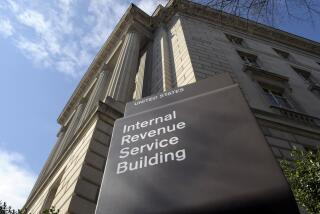Your Money : SPOTLIGHT ON TAXES : How Much Will You Owe?
- Share via
Here are some of the key figures for people wishing to estimate how much tax they will owe. Note that taxable income is income after exemptions and deductions.
* $38,000: For married people filing jointly, this is the point where the tax rate takes its biggest marginal jump, from 15% to 28%. For singles, this occurs at $22,700; for unmarried or legally separated people who are heads of households, $30,500; for married people filing separately, $19,000. Under those levels, you pay 15%.
* 28%: Maximum federal tax rate on long-term capital gains. There is talk of lowering this next year, so take that into consideration.
* 39.6%: Maximum federal tax rate on wages or dividend or interest income, applicable to people with taxable income in excess of $250,000.
* 36%: A 36% rate kicks in for people with taxable income above $140,000 (married filing jointly) or $115,000 (single).
* 31%: A 31% rate applies above $91,850 (married) or $55,100 (single).
* 28%: The effective rate above $38,000 (married) or $22,750 (single). On income below that, a 15% rate applies.
* $9,240: Maximum that an employee can elect to invest in a 401(k) plan in 1994, up from $8,994 in 1993. Including employer contributions, the ceiling is $30,000 or 25% of taxable compensation.
* $40,000 to $50,000: Income level between which IRA deductions phase out, for married people with retirement plan coverage at work. For singles with such coverage, IRAs are fully deductible for income below $25,000 and not at all deductible above $35,000.
* 59 1/2: Age below which a 10% penalty may apply on early withdrawals from IRAs, 401(k)s, variable annuities and other retirement vehicles.
More to Read
Inside the business of entertainment
The Wide Shot brings you news, analysis and insights on everything from streaming wars to production — and what it all means for the future.
You may occasionally receive promotional content from the Los Angeles Times.










